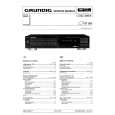|
|
|
Productos
|
|
Información
|
|
Destacado
|
|
|
 |
|
|
No hay comentarios de productos.
USING YOUR COOKTOP
COOKWARE
Fitthesizeofthecookwaretothesizeof the element. This conserves energy, Cooking performance is greatly affected by the type of cookware used. Cookware SHOULD HAVEA FLATBOTTOM to provide uniform cooking results, faster heating and more efficient use of energy.............. A pan with a badly curved bottom will not make good contact with the element and may not get enough heat to bring water to a boil. Do not use woks equipped with round metal rings. The ring, which is designed to support the wok above the element, will trap heat and may damage the elemerit and the cooktop. CANNING When canning, use the HIGH setting just until water comes to a boil or pressure is reached in the pressure canner. that maintains the boil or pressure. 1 Cookware with uneven, warped, or grooved bottoms do not make good contact, will reduce heat conductivity and result in slower, less even heating. "_,,,__.]__ Then, reduce to the lowest heat setting the use of incorrect canning utensils produce excessive heat. Excessive heat can cause permanent damage to the porcelain cooktop, surface element and the drip bowl. the HIGH setting, or Prolonged use of
-.
SUGGESTED HEAT SETTINGS
Use the following chart as a GUIDELINE until you become morefamiliarwithyourcooktop. Keepinmindthatdifferent types of cookware materials require different heat settings for the same cooking operation, We suggest that you experiment to find the heat setting that best suits your particular cooking needs. Chart is based on heavy gauge aluminum cookware. Lower the heat setting if using other materials.
HI
To bring liquid to a boil, blanch, preheat skillet, or bring pressure up in pressure cooker. (Note: Always follow instructions in pressure cooker use and care book.) Always reduce to a lower heat setting when liquids just begin to boil or food begins to cook.
Medium 6-5 To maintain moderate to slow boil for large amounts of liquids.
LO
To keep foods warm before serving.
NOTE: Refer to cookware manufacturer's recommendations for suggested heat settings. Some manufacturers do not recommend the use of HiGH or the use of HIGH for extended cooking operations.
-8-
|
|
 |
> |
|



